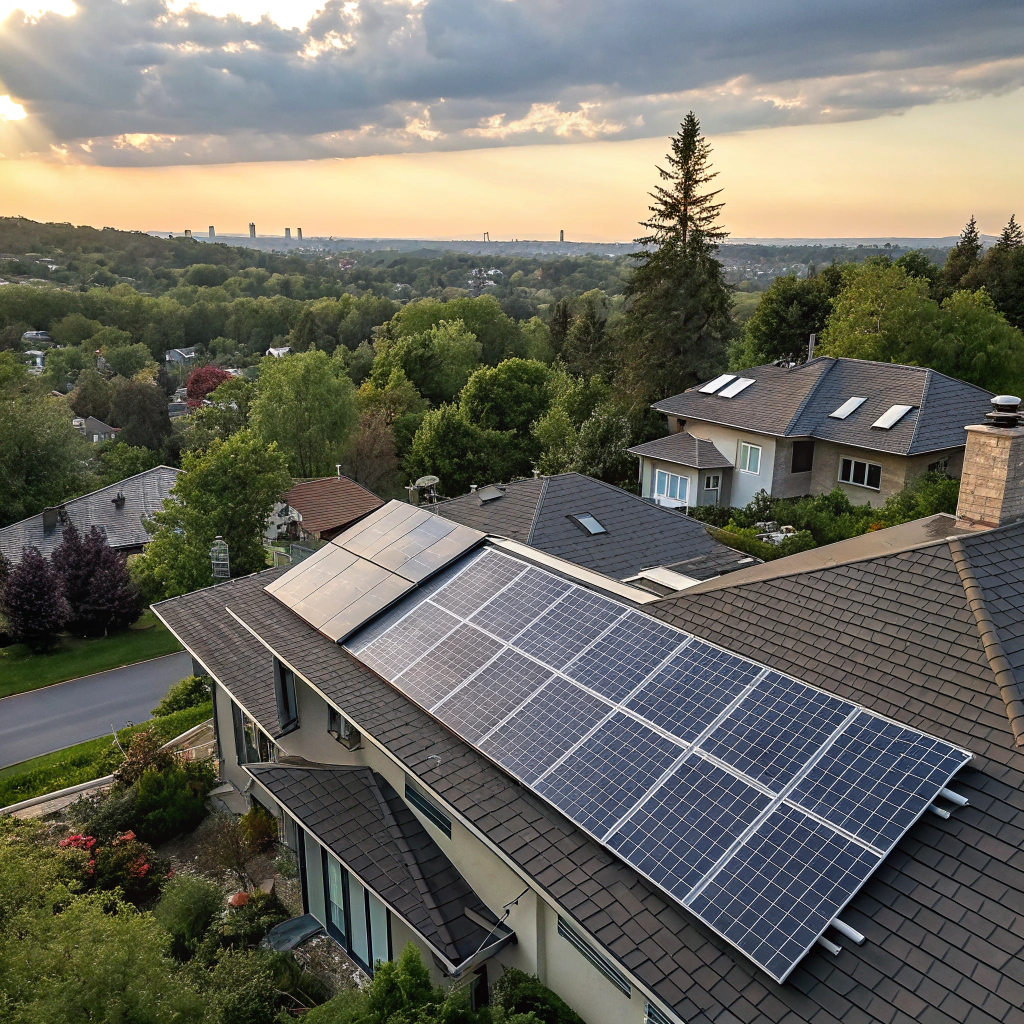Common misconceptions about residential rooftop solar power systems: have you fallen for any of them?
•
Common misconceptions about residential rooftop solar power systems: have you fallen for any of them?
Solar myths cost homeowners thousands in poor decisions and missed savings opportunities yearly.

Common solar misconceptions include focusing only on sunlight intensity while ignoring roof orientation[^1], assuming zero maintenance requirements[^2], and believing bigger systems are always better regardless of actual consumption needs.
Many homeowners dive into solar installations based on incomplete information, leading to suboptimal performance and wasted investment. Understanding these misconceptions can save you significant money and ensure your system delivers maximum value for decades to come.
Misconception 1: Focusing solely on sunlight intensity while ignoring roof orientation[^1] and angle?
Think more sun automatically means better solar performance? This oversimplified thinking costs money.
Solar panel efficiency depends on roof orientation[^1], tilt angle, and shading patterns, not just sunlight intensity. South-facing roofs at 30-45 degree angles typically generate optimal power output.
While sunlight intensity matters, it's just one piece of the solar puzzle. I've seen homeowners install expensive systems on east-facing roofs assuming their sunny climate would compensate, only to achieve 20-30% lower efficiency than expected. The optimal setup combines multiple factors working in harmony.
Roof orientation significantly impacts energy production. South-facing installations capture maximum sun exposure throughout the day, while east and west orientations lose efficiency during peak hours. Even minor shading from trees, chimneys, or neighboring buildings can reduce entire string performance due to electrical connections.
| Factor | Impact on Efficiency |
|---|---|
| South-facing orientation | 100% optimal |
| East/West orientation | 80-85% optimal |
| North-facing | 60-70% optimal |
| Shading (partial) | 10-50% reduction |
| Incorrect tilt angle | 5-25% reduction |
Professional site assessments using tools like solar pathfinders[^3] reveal these nuances, helping optimize placement for maximum return on investment rather than relying solely on weather data.
Misconception 2: Assuming that once installed, the system requires no maintenance?
"Set it and forget it" thinking about solar systems leads to performance degradation.
Solar systems require regular maintenance including panel cleaning, inverter monitoring[^4], electrical connection inspections, and performance tracking[^5] to maintain optimal efficiency and warranty coverage.
This misconception stems from solar marketing emphasizing "maintenance-free" benefits, but reality requires ongoing attention. Dust, debris, bird droppings, and weather residue accumulate on panels, reducing light absorption by 15-25% annually without cleaning.
Inverter systems, the technology converting DC to AC power, typically need replacement every 10-15 years compared to panels' 25-year lifespan. Monitoring systems alert owners to performance drops, electrical faults, or component failures before they become expensive problems.
| Maintenance Task | Frequency | Cost Impact if Ignored |
|---|---|---|
| Panel cleaning | Quarterly | 15-25% efficiency loss |
| Inverter monitoring | Monthly | System failure risk |
| Connection inspection | Annually | Fire hazard, warranty void |
| Performance tracking | Ongoing | Undetected problems |
Weather events, tree growth, and aging connections require periodic professional inspections. Warranty coverage often depends on documented maintenance records, making neglect potentially costly when repairs become necessary.
Misconception 3: Believing that bigger is always better, while ignoring actual electricity consumption and grid connection restrictions?
Installing maximum possible panels seems logical, but oversizing systems wastes money unnecessarily.
Optimal solar system sizing matches actual electricity consumption patterns and local grid connection limits. Oversized systems may face utility restrictions and provide diminishing returns on investment.
The "bigger is better" mentality overlooks crucial factors like net metering caps[^6], utility interconnection limits[^7], and actual usage patterns. Many utilities limit system size to 100-120% of historical consumption, making oversized installations ineligible for full credit programs.
Financial returns diminish when systems exceed household needs. Excess generation beyond net metering caps[^6] often receives wholesale rates (2-4 cents/kWh) instead of retail rates (8-15 cents/kWh), dramatically extending payback periods.
Smart sizing considers seasonal variations, future consumption changes, and local regulations. A properly sized 6kW system often provides better ROI than an oversized 10kW installation, especially when factoring in higher upfront costs and diminishing utility credits.
| System Size | Annual Generation | Utility Acceptance | ROI Timeline |
|---|---|---|---|
| Right-sized | Matches consumption | Full net metering | 6-8 years |
| Oversized 25% | Exceeds needs | Partial credits | 8-12 years |
| Oversized 50%+ | Significant excess | Wholesale rates | 12+ years |
Professional energy audits[^8] and consumption analysis help determine optimal sizing, maximizing financial benefits while avoiding over-investment in unnecessary capacity that won't provide proportional returns.
Conclusion
Avoiding these common solar misconceptions—considering all efficiency factors, planning for maintenance, and right-sizing systems—ensures optimal performance and maximum return on your investment.
[^1]: Understanding roof orientation is crucial for maximizing solar panel efficiency and ensuring optimal energy production.
[^2]: Learn about the essential maintenance tasks for solar systems to ensure long-term performance and efficiency.
[^3]: Discover how solar pathfinders can enhance your solar installation's efficiency by optimizing panel placement.
[^4]: Discover the significance of inverter monitoring in maintaining solar system efficiency and preventing costly failures.
[^5]: Learn how performance tracking can help you identify issues early and maintain optimal solar system efficiency.
[^6]: Understanding net metering caps can help you optimize your solar investment and avoid financial pitfalls.
[^7]: Explore utility interconnection limits to ensure your solar system is compliant and maximizes financial returns.
[^8]: Energy audits are vital for determining the right solar system size, maximizing efficiency and savings.




